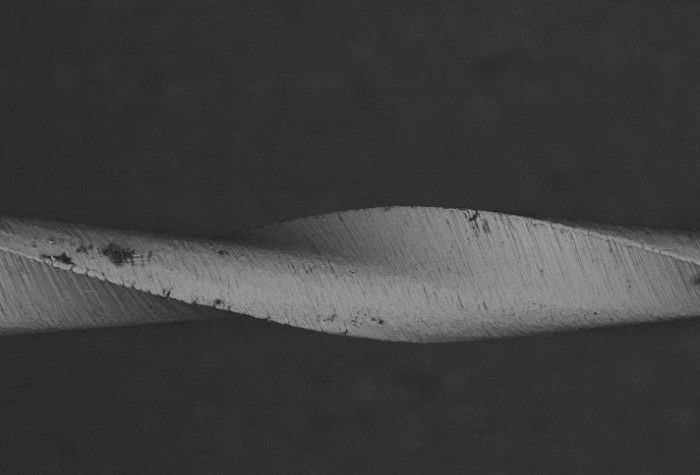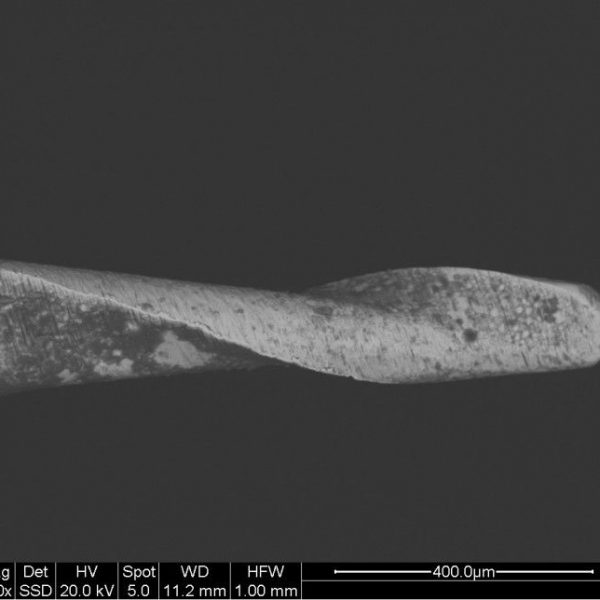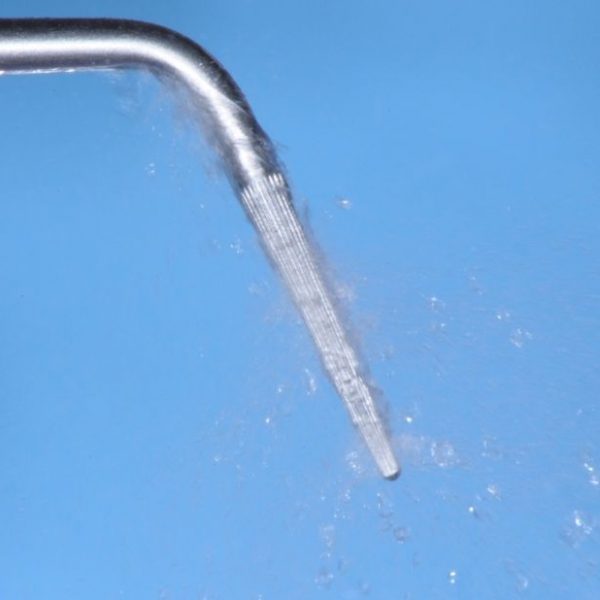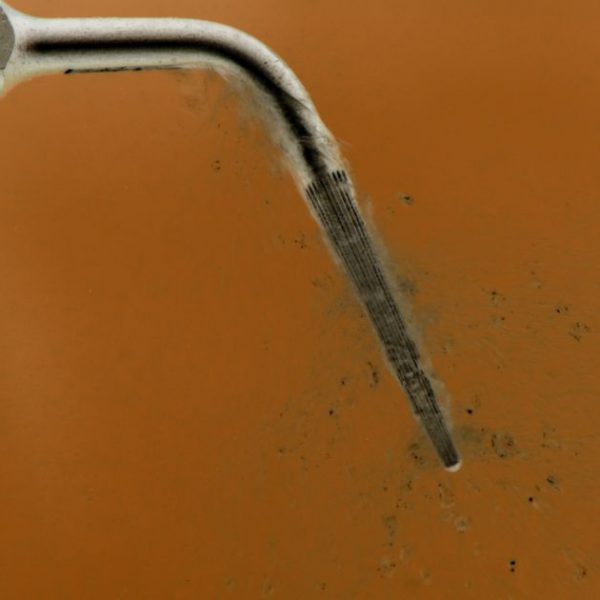
Should Rotary Files be used once? Part 1
03/03/2017
The Community
Warning: Undefined variable $post in /var/www/vhosts/styleitaliano-endodontics.org/endodontics.styleitaliano.org/wp-content/plugins/oxygen/component-framework/components/classes/code-block.class.php(133) : eval()'d code on line 2
Warning: Attempt to read property "ID" on null in /var/www/vhosts/styleitaliano-endodontics.org/endodontics.styleitaliano.org/wp-content/plugins/oxygen/component-framework/components/classes/code-block.class.php(133) : eval()'d code on line 2
Nickel-titanium (Ni-Ti) alloy was first used for endodontic files by Walia in 1988 (1) as an alternative to stainless steel for hand files. The first Ni-Ti rotary files came to the market a few years later in the early 1990s. These new instruments revolutionized root canal therapy but also greatly increased the cost of material for dentists. To reduce the fees associated with rotary files, most practitioners sterilize them and reuse them on different patients, just like other metal dental instruments. Due to the nature and the usage of endodontic files, using them multiples times raises some concerns. First, do their mechanicals properties change after shaping a canal or after a sterilization cycle? This is important to know as endodontic files can separate inside the canals of the tooth and cause a blockage that will prevent root canal disinfection. This accident was seen in 2.4%% of files used in an endodontic clinic (2). It is important to know what happens to the cyclic fatigue resistance and the torsional strength of the instruments after usage and sterilization. In the same manner, is there a loss of cutting efficiency that could reduce the cleaning ability of the file? Second, is there a cross contamination risk in using the same endodontic files on different patients? Since the endodontic instruments have small flutes that can get packed with pulpal tissue or infected dentin, are we sure that our sterilization methods can get rid of all the possible infectious agents?
In a series of two articles, we will discuss the previously mentioned aspects of reusing rotary endodontic files. In this first article, we will review how using and sterilizing the files can modify the three majors mechanical properties of the rotary files. First, we will see what happens to the file edges and how it affects the cutting efficiency. Second, the effects of usage and sterilization on the cyclic fatigue resistance will be addressed. In this section, we will see if there is a difference between the different generation of Ni-Ti materials when sterilized. Last, we will look at the torsional strength changes after sterilization. Next month, in our second article, we will analyzed the literature on the sterilization of endodontic files from a microbiological standpoint, especially looking at prion contamination.
PHYSICAL CHANGES AND CUTTING EFFICIENCY
Scanning electron microscopy (SEM) was used to inspect endodontic rotary files after use or after sterilization. Rapisarda et al. have shown that a 60 seconds active period in an acrylic block only induces minor changes on the file surface, but that a 240 seconds use created major surface alterations (3). Others have show changes on the edges of the flutes and minor cracks after 5 or 6 simulated uses on Profiles rotary files (4,5). In another study, sterilization alone, without simulated use, has been credited in creating small defects and new deposits on the file surface (6). This created a rougher surface. The authors suggested that the deposits could be an increase in the layer of TiO2. It should be noted that this was after 11 sterilization cycles, which seems more than most clinicians will accept. All these changes could cause a loss of cutting efficiency and a possible start of a fracture propagation leading to a file separation. No evidence directly support this at this time.
It is common knowledge that stainless steel endodontic hand files lose their cutting efficiency after certain sterilization procedures (7). It would also be common sense to expect a loss of cutting ability for Ni-Ti rotary files after usage or sterilization. It was proven that a file will create a smaller canal after it’s third use (8). The cutting efficiency of rotary file is also lower after 14 sterilization cycle, but not after 7 cycles (9). On the opposite, Gambarini et al. found no difference in cutting ability of Twisted files after 10 uses in plastic blocks (10). Strangely, in a study using the Hyflex CM files, which have thermally treated Ni-Ti, researchers found that the file lost some cutting efficiency after two uses but regain the original ability after 5 uses and up to 7 uses (11). The authors suggest that this could be caused by a shift in the austenite and martensite phases, affecting the mechanical properties. Even with these surface changes, rotary files can keep the original anatomy of a simulated canal in a plastic block after 3 uses (12).
So it seems changes are seen on a microscopic levels after a few uses or after several sterilization, but that these changes did not influence the clinical cutting efficiency of the files.
CYCLIC FATIGUE RESISTANCE
Cyclic fatigue is the stress induced in the metal of the file when it compresses and extends each time it does a full rotation in a curve canals. This will create metal hardening and ultimately the file fracture. The resistance to this phenomenon is dependent on the size and cross-section of the instrument and the composition and treatment of the metal. When testing files, we often calculate how many rotations they can withstand in a certain curvature before separating. We have seen number between 700-900 rotations in S-curves for recent files like ProTaper Next and ProTaper Gold (13). These numbers have been multiplied 4 to 9 times with the advance of control memory (CM) wire used in Typhoon and Hyflex files (14). When considering that most files will be rotated at speed between 250 and 500 rpm, this could translate in 1 to 20 minutes of rotating time inside a canal. Of course, other factors should be taken in consideration. As suspected, cyclic fatigue resistance was proven many times to diminish with uses and with size (18, 19). Although, no fracture was seen before 8-10 clinical uses (15, 16). In an endodontic clinic, the fracture incidence was the same during the first 4 uses of a file (2).
Sterilization can also affect the cyclic fatigue resistance in many ways. First, immersion in heated 5.25% NaOCl for an hour or more did reduce the cyclic fatigue resistance (17), but not after only a 3 or 5 minutes bath(18, 19). If the shank was also immersed in the NaOCl, a severe corrosion could be seen and cause a great loss of cyclic fatigue resistance, probably due to a galvanic reaction (19). A 3 minutes EDTA bath was enough to cause diminish the cyclic fatigue resistance (18). Sterilization with heat had either no effect on the cyclic fatigue resistance (20) or actually increase it up to 39% (21). The increase was mostly seen in heat-treated files (20, 22). Smaller glide path files had a lower cyclic fatigue resistance after one use and one sterilization but it was not statistically significative (23).
In resume, cyclic fatigue resistance will diminish with multiple uses, but files seem to be able to withstand use in 4 to 9 cases. Sterilization seems to actually help the cyclic fatigue resistance.
TORSIONAL STRENGHT
Endodontic rotary files turn inside the tooth, scraping the walls to enlarge the canals. If the friction between the file and the walls is stronger than the file torsional strength, the file will deforms until it fractures if the rotation is not stopped. The torsional strength can also be called torsional deformation resistance or shear strength. The larger the file and the bulkier the crosscut, the stronger the torsional deformation resistance will be. Studies have found contradictory effects of multiples uses of Ni-Ti rotary files on the torsional strength. When use in plastic blocks for 5 times, the used files had less torsional strength than new files (24). On the opposite, files that shaped 5 canals in extracted teeth had the same torsional deformation resistance has new files (25). Induced cyclic fatigue significantly reduced torsional in larger rotary files only (26).
Steam sterilization and NaOCl bath for less than 2 hours did not affect the torsional fracture resistance (27, 28, 29).
The data is not clear on torsional strength when rotary file are used multiple times. So smaller files might need to be discarded faster than larger ones. Sterilization has no effect on torsional fracture resistance.

Fig. 1
File edge is ragged after one use and sterilization. Courtesy Dott. Paolo Generali & Dott. Luigi Generali
Bibliography
Walia et al. An initial investigation of the bending and torsional properties of Nitinol root canal files. J Endod 1988;14:34651
Wolcott et al. Separation incidence of ProTaper rotary instruments: a large cohort clinical evaluation. J Endod 2006;32:1139 1141
Rapisarda et al. Wear of Nickel-Titanium Endodontic Instruments Evaluated by Scanning Electron Microscopy: Effect of Ion Implantation. J Endod. 2001 Sep;27(9):588-92
Alapati et al. Scanning Electron Microscope Observations of New and Used Nickel-Titanium Rotary Files. J Endod. 2003 Oct;29(10):667-9
Svec et al. The Deterioration of Rotary Nickel-Titanium Files under Controlled Conditions. J Endod. 2002 Feb;28(2):105-7
Alexandrou et al. SEM observations and differential scanning calorimetric studies of new and sterilized nickel-titanium rotary endodontic instruments. J Endod. 2006 Jul;32(7):675-9
Haïkel et al. Effects of cleaning, disinfection, and sterilization procedures on the cutting efficiency of endodontic files. J Endod 1996;22(12):657661
Ounsi et al. Comparison of Two Techniques for Assessing the Shaping Efficacy of Repeatedly Used Nickel-Titanium Rotary Instruments. J Endod 2011;37:847850
Rapisarda E et al. Effect of sterilization on the cutting efficiency of rotary nickel-titanium endodontic files. OOOOE. 1999 Sep;88(3):343-7
Gambarini et al. Cutting efficiency of nickeltitanium rotary and reciprocating instruments after prolonged use. Odontology. 2016 Jan;104(1):77-81
Seago et al. Effect of Repeated Simulated Clinical Use and Sterilization on the Cutting Ef?ciency and Flexibility of Hy?ex CM Nickel-Titanium Rotary Files. J Endod. 2015 May;41(5):725-8
Thompson et al. Evaluation of a New Filing Systems Ability to Maintain Canal Morphology. J Endod 2014;40:867870
Topçuo?lu et al. In Vitro Comparison of Cyclic Fatigue Resistance of ProTaper Next, HyFlex CM, OneShape, and ProTaper Universal Instruments in a Canal with a Double Curvature. J Endod. 2016 Jun;42(6):969-71
Shen et al. Effect of environment on fatigue failure of controlled memory wire nickel-titanium rotary instruments. J Endod. 2012 Mar;38(3):376-80
Vieira et al. Influence of multiple clinical use on fatigue resistance of ProTaper rotary nickel-titanium instruments. Int Endod J. 2008 Feb;41(2):163-72
Gambarini. Cyclic fatigue of ProFile rotary instruments after prolonged clinical use. Int Endod J. 2001 Jul;34(5):386-9
Peters et al. Effect of Immersion in Sodium Hypochlorite on Torque and Fatigue Resistance of Nickel-Titanium Instruments. J Endod 2007;33:589 593
Pedullà et al. Cyclic fatigue resistance of nickel-titanium instruments after immersion in irrigant solutions with or without surfactants. J Endod 2014;40:12451249
Berutti et al. Influence of sodium hypochlorite on fracture properties and corrosion of ProTaper Rotary instruments. Int Endod J. 2006 Sep;39(9):693-9
Plotino et al. Experimental Evaluation on the Influence of Autoclave Sterilization on the Cyclic Fatigue of New Nickel-Titanium Rotary Instruments. J Endod 2012;38:222225
Viana et al. Influence of sterilization on mechanical properties and fatigue resistance of nickel-titanium rotary endodontic instruments. Int Endod J. 2006 Sep;39(9):709-15
Zhao et al. Effect of autoclave sterilization on the cyclic fatigue resistance of thermally treated Nickel-Titanium instruments. Int Endod J. 2016 Oct;49(10):990-5
Özyürek et al. A Comparison of the Cyclic Fatigue Resistance of Used and New Glide Path Files. J Endod. 2017 Mar;43(3):477-480
Yared. In Vitro Study of the Torsional Properties of New and Used ProFile Nickel Titanium Rotary Files. J Endod 2004 Apr;30(6):4102
Svec et al. The deterioration of rotary nickel-titanium files under controlled conditions. J Endod. 2002 Feb;28(2):105-7
Ullmann et al. Effect of cyclic fatigue on static fracture loads in ProTaper nickel-titanium rotary instruments. J Endod. 2005 Mar;31(3):183-6
Casper et al. Comparison of autoclaving effects on torsional deformation and fracture resistance of three innovative endodontic file systems. J Endod. 2011 Nov;37(11):1572-5
Silvaggio et al. Effect of heat sterilization on the torsional properties of rotary nickel-titanium endodontic files. J Endod. 1997 Dec;23(12):731-4
Peters et al. Effect of Immersion in Sodium Hypochlorite on Torque and Fatigue Resistance of Nickel-Titanium Instruments. J Endod 2007;33:589 593



